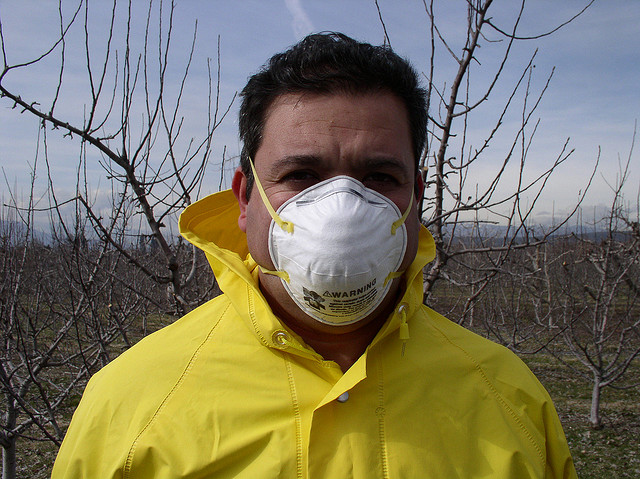Canadian regulators are focusing their attention on facilitating development in the oil and gas industry, and they are also increasing the accountability of operators. Significantly, environmental liability insurance requirements are expected to increase for both pipeline and railway operators, reducing the extent to which governments and taxpayers cover the costs of cleanup and other damages caused by spills and accidents.
Audit, Compliance and Risk Blog
Canadian Oil Industry—Liability Insurance for Rail vs. Pipeline
Posted by STP Editorial Team on Wed, Jan 29, 2014
Tags: Business & Legal, Environmental risks, Environmental, Oil & Gas, Insurance, Insurance Claims, Transportation, Canadian
Hazardous Substances: New Form Offers Way Out Of Prop. 65 Prosecution
Posted by Viola Funk on Wed, Jan 22, 2014
A recent change to rules around Proposition 65 lawsuits will make it easier for some businesses to avoid being prosecuted for infringement of the Safe Drinking Water and Toxic Enforcement Act. The alteration covers cases in which individuals allege inadequate warning signage regarding the release of substances known to cause cancer or birth defects or other reproductive harm. Such suits have proliferated under the legislation, embroiling business owners in costly legal battles.
Tags: Corporate Governance, Business & Legal, Health & Safety, Environmental risks, Environmental, Hazcom
With legislation action on climate change deadlocked by partisan divisions in Congress, the Obama Administration is pursuing a growing set of administrative and regulatory initiatives under existing authority. Many of these involve actions by the Environmental Protection Agency (EPA) applying Clean Air Act (CAA) authority, but some involve other EPA authority and/or other agencies.
Tags: Health & Safety, Environmental risks, Environmental, EPA, Hazcom
Environmental Compliance: EPA Revises Volatile Organic Compounds
Posted by STP Editorial Team on Wed, Jan 15, 2014
Effective November 21, 2013, EPA exempted 2,3,3,3-tetrafluoropropene (also known as HFO–1234yf) from the regulatory definition of Volatile Organic Compounds (VOCs). This compound will not be counted as a VOC for entities using or producing HFO–1234yf in a product other than an aerosol coating, limiting the VOC emissions from a facility, or otherwise controlling the use of VOC for purposes related to attaining the ozone NAAQS. Emissions of this compound will not be considered in determining whether a proposed new or modified source triggers the applicability of Prevention of Significant Deterioration (PSD) requirements, in areas where the PSD program is implemented by the EPA or a delegated state, local, or tribal agency. This action may also affect whether HFO–1234yf is considered a VOC for state regulatory purposes, depending on whether the state relies on the EPA’s regulatory definition of VOCs.
Tags: Health & Safety, Environmental risks, Environmental, EPA, Greenhouse Gas, ghg, Hazcom, Oil & Gas
OSHA: Is It Time To Update The Process Safety Management Standard?
Posted by Jon Elliott on Thu, Jan 09, 2014
The Occupational Safety and Health Administration’s (OSHA’s) Standard for Process Safety Management of Highly Hazardous Chemicals (usually referred to as “PSM”) in 1992, requires extensive risk assessments and reduction efforts by facilities where a significant incident involving these chemicals might have catastrophic consequences. OSHA adopted PSM in 1992, and has made only minor technical revisions in the ensuing two decades. However, several federal and state initiatives are developing recommendations and may lead to significant changes in 2014.
Tags: Employer Best Practices, Health & Safety, OSHA, Training, Environmental, EHS, Hazcom
Common Violations at Dealerships, Service and Repair Facilities
Posted by STP Editorial Team on Mon, Dec 09, 2013
Based on a limited survey of the Certified Unified Program Agencies (CUPAs) of the California Environmental Protection Agency (Cal/EPA), the Department of Toxic Substances Control (DTSC) found the following top eight violations:
Tags: Corporate Governance, Health & Safety, Environmental risks, Environmental, EPA
Environmental Compliance: EPA Tracks Reductions in GHG Emissions
Posted by Viola Funk on Fri, Dec 06, 2013
Do you ever wonder whether auditing of greenhouse gas emissions is working? It may be a bit early in the game to say for sure, given that GHG emission tracking standards are a recent phenomenon. But an annual report compiled by the U.S. Environmental Protection Agency (EPA) may be a good gauge of trends in emission reductions, judging by its latest installment.
Tags: Corporate Governance, Business & Legal, Health & Safety, Environmental risks, Environmental, EHS, EPA, Greenhouse Gas, ghg
Move Over Hazardous Chemicals … Here Comes Something Safer!
Posted by STP Editorial Team on Wed, Dec 04, 2013
American workers suffer more than 190,000 illnesses and 50,000 deaths annually as a result of working with and being exposed to tens of thousands of chemicals every day. Workplace chemical exposures have been linked to cancers, and other lung, kidney, skin, heart, stomach, brain, nerve, and reproductive diseases. While many of these chemicals are suspected of being harmful, only a fraction of them are regulated in the workplace.
Tags: Business & Legal, Health & Safety, OSHA, Environmental risks, Environmental, Hazcom
OSHA Proposes Expansion of Occupational Injury & Illness Reporting
Posted by Jon Elliott on Mon, Dec 02, 2013
The Occupational Safety and Health Administration (OSHA) requires employers to prepare and maintain records of occupational injuries and illnesses (I&Is), and to provide employees with annual summaries of I&I statistics for their "establishment." At present, OSHA and/or the Department of Labor's Bureau of Labor Statistics (BLS) can demand that selected employers report this information to them. BLS uses this information for statistical analyses of factors that cause workplace injuries and illnesses, and OSHA uses it to set rulemaking and enforcement priorities. In addition, OSHA requires all employers to report work-related accidents that result in one or more serious injuries or deaths (what OSHA calls "catastrophes").
Tags: Corporate Governance, Business & Legal, Employer Best Practices, Health & Safety, Employee Rights, Environmental
Regulatory Compliance: Do These Penalties Seem Larger To You?
Posted by Jon Elliott on Mon, Nov 25, 2013
Most laws include penalty provisions, for assessment against people who fail to comply with legal responsibilities created by the laws. Back in 1996, Congress noticed that inflation was steadily reducing the deterrent effects of the penalties set forth in statutes, and that Congress itself was not reliably adjusting the maximum penalties assessable by enforcement personnel. Rather than burden itself with a responsibility to amend laws to keep up with inflation, Congress enacted the passed Debt Collection Improvement Act (DCIA) of 1996 to assign that responsibility to administrative agencies. DCIA requires most federal agencies to issue rules at least every 4 years, adjusting most penalties for inflation. In the ensuing 17 years, most agencies have made these periodic adjustments—larger in times of high inflation and lower in times of low inflation.
Tags: Corporate Governance, Business & Legal, Environmental risks, Environmental, EPA










